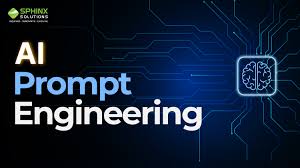Executive Summary Small and Medium Enterprises (SMEs) are increasingly turning to Artificial Intelligence (AI) to enhance productivity, automate routine tasks, and support decision-making. This white paper outlines how SMEs can use and create AI bots based on Perplexity.ai and other Large Language Model (LLM) platforms. It covers practical use cases, technical tools, and services available through IAS-Research.com and KeenComputer.com for seamless implementation.
White Paper: Creating and Using AI Bots for Perplexity and Other LLM Tools for SMEs
1. Executive Summary
Small and Medium Enterprises (SMEs) are increasingly adopting Artificial Intelligence (AI) to enhance productivity, automate routine tasks, and support decision-making. This white paper details how SMEs can leverage and create AI bots, focusing on Large Language Model (LLM) platforms such as Perplexity.ai. It outlines practical use cases, essential tools, and the services offered by IAS-Research.com and KeenComputer.com to facilitate seamless implementation.
2. Introduction to AI Bots and LLM Tools
AI bots, powered by LLMs including GPT-4, Claude, and Mistral, possess the capability to understand and generate human-like responses. SMEs can utilize these bots to streamline customer service, conduct market research, automate business processes, and improve operational efficiency. This paper explores the potential of these technologies for SMEs.
3. Key Use Cases for SMEs
- Customer Support: Deploying bots to address frequently asked questions (FAQs), troubleshoot issues, and escalate complex queries.
- Tool: OpenAI GPT-4, integrated via API with CRM tools (e.g., Zoho, HubSpot).
- Market and Competitive Research: Leveraging Perplexity.ai to efficiently gather summarized web data and derive competitive insights.
- Tool: Perplexity.ai Pro with real-time web access and citation tracing.
- Product Documentation and Training: Automating the generation and maintenance of user manuals, training materials, and standard operating procedures (SOPs).
- Tool: LangChain-based Retrieval Augmented Generation (RAG) pipelines using internal documents and GPT-4.
- Business Intelligence and Data Insights: Utilizing LLMs to interpret and visualize business data, facilitating more informed decision-making.
- Tool: GPT, Pandas AI, and Streamlit dashboards.
- Code Generation and IT Support: Employing AI bots to assist in code development, debugging processes, and IT task management.
- Tool: GitHub Copilot, ChatGPT Code Interpreter, or Replit Ghostwriter.
- Sales and Lead Generation: Utilizing AI bots to qualify leads, automate follow-up communications, and provide personalized product recommendations.
- Tool: HubSpot, Salesforce, or custom-built bots using LLMs to analyze customer interactions and data.
- Marketing Automation: Automating social media posting, email marketing campaigns, and content creation workflows.
- Tool: Jasper AI, Buffer, or Hootsuite, integrated with LLMs for content generation and personalization.
- Human Resources: Assisting with employee onboarding, addressing inquiries regarding benefits and policies, and automating the initial screening of candidates.
- Tool: Custom-built bots using LLMs and HR databases, or platforms like Workday.
- Content Creation: Generating blog posts, articles, marketing copy, and other written content.
- Tool: OpenAI GPT-4, Gemini, or other LLMs, often used in conjunction with content management systems.
- E-commerce Assistance: Providing product information, answering customer questions, and facilitating the purchase process.
- Tool: Integration of LLMs with e-commerce platforms like Shopify or WooCommerce.
- Appointment Scheduling: Automating the process of booking and managing appointments.
- Tool: Calendly or custom integrations with LLMs.
- Feedback Collection: Gathering customer feedback through conversational interfaces to improve services and products.
- Tool: Integration of LLMs with survey platforms.
4. Building AI Bots: Architecture and Tools
- Architecture: Frontend (UI), Backend (LLM API), and Vector Database (for RAG)
- Frameworks: LangChain, LlamaIndex, Haystack
- APIs: OpenAI, Cohere, Mistral
- Hosting: Docker containers deployed on AWS, Azure, or local servers
5. Retrieval Augmented Generation (RAG)
Retrieval Augmented Generation (RAG) combines external knowledge (accessed via search or documents) with LLMs to address domain-specific queries. Perplexity's native integration and open-source RAG stacks enable SMEs to personalize bots without requiring extensive model training.
6. Prompt Engineering and Fine-Tuning
- Prompt Templates: Designing reusable and business-specific prompt templates.
- Fine-Tuning: Employing techniques like LoRA or PEFT for domain-specific adjustments.
7. Integration and Deployment for SMEs
- CRM and ERP Integration: Developing custom middleware for seamless integration with systems like Zoho, Tally, and SAP.
- Cloud Deployment: Utilizing Docker and Kubernetes for scalable architecture on platforms like AWS and Azure.
- Security: Implementing robust measures including API authentication, data anonymization, and audit logs.
8. How IAS-Research.com and KeenComputer.com Can Help
- Consultation services for use case identification and strategy.
- Custom AI bot development using Perplexity, GPT, and open-source models.
- Comprehensive deployment support, with a focus on security and compliance.
- Tailored training programs for SME teams to facilitate effective AI adoption.
9. References and Resources
- Manning Publications: "AI Agent in Action"
- OpenAI API Documentation: https://platform.openai.com/docs
- Perplexity.ai FAQ and Developer Docs: https://www.perplexity.ai/
- LangChain Documentation: https://docs.langchain.com/
- Hugging Face Transformers: https://huggingface.co/docs
- Copilot.Live: "AI Chatbots For Small Business: Benefits, Examples & Use Cases": https://www.copilot.live/blog/chatbots-for-small-business
- Security Bank: "How AI is Transforming Small Businesses: Practical Uses for Growth": https://www.security-banks.com/blog/ai-for-small-business-growth
- Fastbots.ai: "Top 7 Use Cases Where AI Bots Make a Big Impact In Sales": https://fastbots.ai/blog/top-7-use-cases-where-ai-bots-for-sale-make-a-big-impact
- Forbes: "Top Five AI Use Cases For SMBs To Grow Your Business": https://www.forbes.com/councils/forbestechcouncil/2024/09/11/top-five-ai-use-cases-for-smbs-to-grow-their-business/
- U.S. Chamber of Commerce: "How Small Businesses Are Using AI as a Growth Engine": https://www.uschamber.com/co/run/technology/how-small-businesses-are-using-ai
- TD Bank: "How Small and Medium Sized Businesses Can Benefit from Artificial Intelligence Tools": https://stories.td.com/us/en/article/how-small-and-medium-sized-businesses-can-benefit-from-ai-tools
- Google Cloud Blog: "Real-world gen AI use cases from the world's leading organizations": https://cloud.google.com/transform/101-real-world-generative-ai-use-cases-from-industry-leaders
- Raconteur: "How four small businesses are making use of AI on a budget": https://www.raconteur.net/technology/four-ai-case-studies
For implementation assistance and demo requests, please contact:
KeenComputer.com | IAS-Research.com
